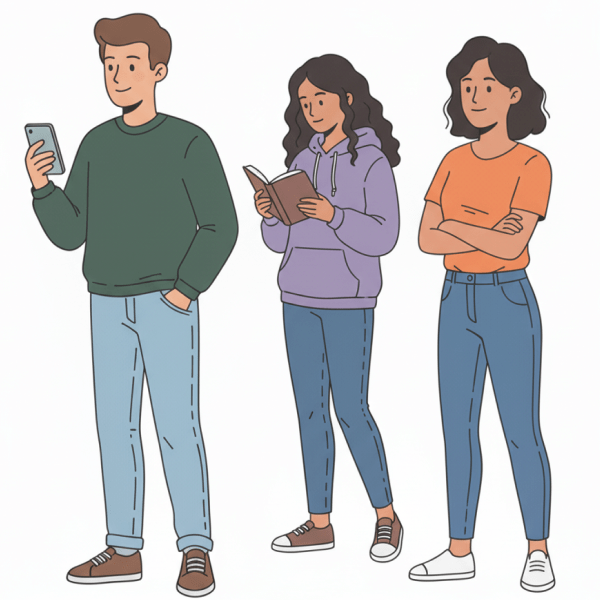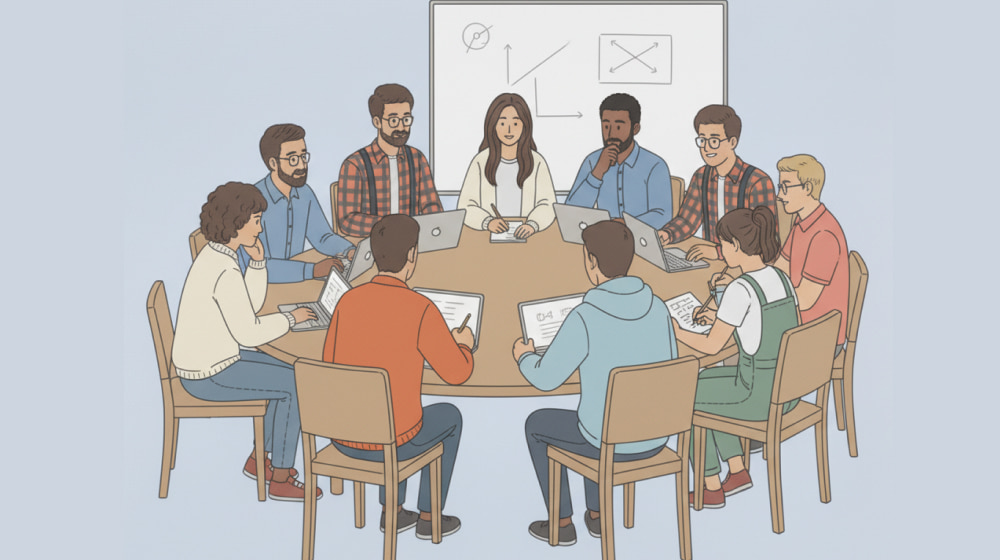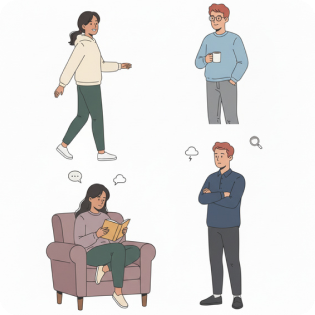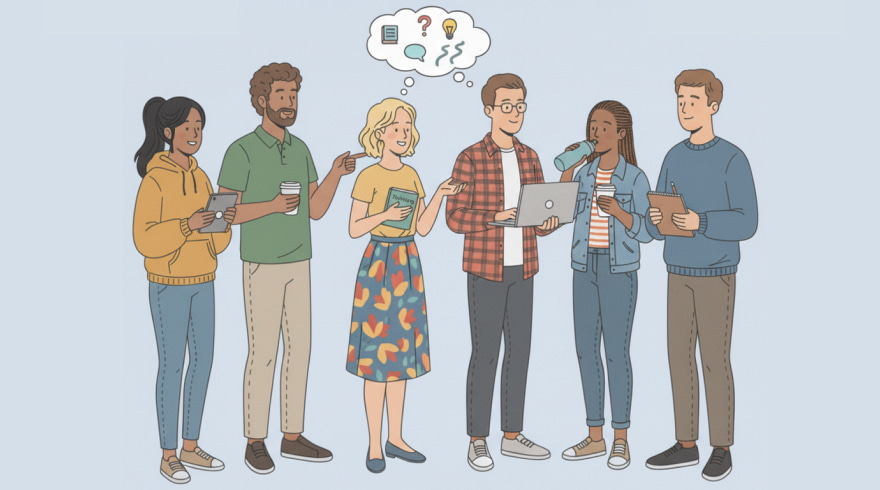
Understanding Introversion As a Personality Pattern
Psychologists describe introversion as a stable orientation toward inner stimuli, reflective thinking, and selective social engagement. In research literature, an introverted personality sits on a continuum rather than inside a rigid category. That means your comfort with solitude, depth of focus, and preference for meaningful dialogue can all coexist with moments of sociability. Instead of a binary label, modern trait science treats quiet energy as one thread woven into a broader tapestry of temperament, motivation, and attention control.

Popular culture often compresses complex science into catchy headlines and quick quizzes. Across media, the phrase is introvert a personality shows up in simplistic debates, yet clinical frameworks emphasize a spectrum of traits that can vary by context and development. People shift with environment, sleep, stress, and goals, so the same person can look contemplative in the morning and animated at a trusted friend’s dinner. This fluidity reflects nuance rather than contradiction, and it helps explain why static labels rarely capture lived experience.
Recharge to Achieve
Identity conversations benefit from language that clarifies without confining. When career advice simplifies things, the idea of an introvert personality type can be a helpful starting point, not a final diagnosis. Knowing you recharge in calm settings makes it easier to schedule deep work, plan restorative breaks, and negotiate meeting formats. Over time, this awareness supports better boundaries, stronger collaboration, and sustainable achievement without burning through your social battery.

Using Introvert and Extrovert Personality Traits
Quiet focus is not a liability; it’s a strategic asset in environments that reward accuracy, insight, and patience. Across assessments, multiple models describe introvert personality types in language that captures energy management and attention preferences. This perspective reframes solitude as incubation time for ideas, listening as a form of influence, and preparation as a competitive edge. Teams often depend on people who notice subtle signals, synthesize information, and craft careful decisions when stakes are high.
| Strength | Why it helps | Practical application |
|---|---|---|
| Deep focus | Enables complex problem solving without distraction | Block 90-minute sessions for analysis or creative drafting |
| Active listening | Builds trust and reveals hidden requirements | Use reflective questions to clarify scope before acting |
| Preparation | Reduces risk and improves quality | Circulate agendas and pre-reads to shape smarter meetings |
| Calm presence | Stabilizes groups under pressure | Model steady pacing during crises and negotiations |
Benefits compound when strengths are deliberately practiced rather than hidden. In practical coaching, writers describe types of introverts to illustrate distinct combinations of social appetite, assertiveness, and sensitivity. Regardless of subtype, high-quality recovery, sleep, nature, and boundaries, amplifies capacity the next day. With the right cadence, you can alternate between solo sprints and short, high-impact collaborations that showcase analysis, empathy, and principled decision-making.
- 1Protect prime hours for concentrated tasks that require nuance.
- 2Shift routine updates to written channels to save live energy.
- 3Batch meetings to minimize context switching fatigue.
- 4Use thoughtful questions to steer discussions efficiently.
Career Success for Introverts
Career momentum accelerates when environments fit your nervous system. For planning your week, it helps to recognize several introvert types without assuming one label tells your whole story. Rotating between high-focus workstreams, brief syncs, and restorative pauses preserves cognitive clarity. Over months, this pattern yields better output, steadier mood, and a reputation for quality that opens opportunities aligned with your strengths.

Using an Introvert Vs Extrovert Personality Test at Work
Collaboration thrives when different energy styles complement one another. Within team dynamics, many colleagues exhibit an extrovert personality that complements quieter styles. Outgoing teammates often shine in rapid ideation, on-the-fly networking, and morale boosting. When paired with thoughtful preparation and measured pacing, the combined effect can be both imaginative and reliable, turning sprinting brainstorms into projects that actually ship.

Role clarity reduces friction and avoids caricatures. In occupational psychology, you may read about the extrovert personality type in case studies involving sales or hospitality. Those contexts reward spontaneous engagement and swift feedback loops, while research-heavy or compliance-driven settings reward deliberation. Savvy leaders design workflows where each person’s natural fuel, whether face-time or focus-time, powers the right moments. Language matters in cross-style conversations. In public discourse, the phrase what is an extroverted personality tends to anchor debates about charisma and influence. A better lens looks at social energy regulation, stimulus thresholds, and reward sensitivity. By centering on needs, quiet to think, talk to refine, breaks to reset, teams trade stereotypes for agreements, and both idea generation and execution improve.
- 1Open meetings with written prompts so reflective voices contribute early.
- 2Timebox brainstorming, then shift to silent ranking to refine choices.
- 3Alternate presenters to balance high-energy delivery with concise analysis.
Traits That Shape Behavior
Personality rarely travels alone; traits cluster and interact. In trait mapping, coaches often compare introvert and extrovert personality traits to design rest and engagement rhythms. For example, a contemplative analyst might also score high on openness, fueling creativity, while a reserved leader could show strong conscientiousness, powering reliability. These blends explain why two quiet people can look utterly different in meetings, negotiation, and conflict.

Conclusion: Flexible Approaches to Personality Types
Typology can be useful as long as it remains flexible and non-dogmatic. Across classic frameworks, writers often group the 4 types of introverts into social, anxious, thinking, and restrained categories. Each pattern highlights a distinct mechanism: preference for intimacy over crowds, self-conscious arousal, rich internal simulation, or deliberate pacing. Rather than boxes, think of them as lenses that help you select strategies for workload, relationships, and recovery.
Balance also involves understanding outgoing patterns without stereotyping. In survey research, analysts sometimes cluster extroverted personality types by assertiveness, sociability, and reward sensitivity. Awareness of these differences helps teams pick the right messenger for a pitch, the right facilitator for a workshop, and the right architect for a process redesign. Matching task demands to natural energy saves time and boosts outcomes.
Frequently Asked Questions
- Is introversion the same as shyness?
Not necessarily. Shyness involves social anxiety and fear of judgment, whereas introversion centers on where you draw energy and how much stimulation feels comfortable. A person can be socially confident yet prefer small groups and reflective time, and another can be shy but still enjoy frequent events once they warm up to the room.
- How do introverted people succeed at work and school?
They lean into preparation, written communication, and strategic one-on-ones. By shaping their calendar, deep work before meetings, recovery between presentations, they safeguard bandwidth for precision and creativity. Success is less about constant visibility and more about consistent value delivered through clear outcomes.
- Are ambiverts real?
Yes, many people show context-dependent patterns that flex with task and setting. Some people identify with an introverted extrovert personality type when they switch gears depending on context, preferring quiet while designing but thriving in short bursts of social exchange while teaching or selling. This adaptability can be powerful when managed intentionally with proper rest.
- How can I tell where I fall on the spectrum?
Start by observing energy after activities: do you feel restored by solitude or by sociable buzz. For measurement, reputable quizzes labeled as a personality test for introvert extrovert can offer a snapshot, though they should supplement, not replace, self-reflection and feedback from people who know you well. Track patterns over weeks rather than relying on a single moment.
- What is the key difference between introverts and extroverts?
At the core, differences involve preferred stimulation levels, social energy regulation, and recovery needs. In plain terms, the contrast often gets simplified as introvert vs extrovert personality in popular media, but the science points to overlapping distributions rather than two separate boxes. Understanding your levels helps you design better days, healthier relationships, and more sustainable performance.
The Latest News
-
![Extrovert Personality: A Deep Guide to Strengths, Skills, and Real-World Advantages]() Extrovert Personality: A Deep Guide to Strengths, Skills, and Real-World Advantages Take Introvert & Extrovert Personality Type Quiz Get Started The Social Engine Behind Outgoing Temperaments People who thrive in conversation, feel energized by teamwork, and seek lively environments often get tagged as “the talkative ones,” yet the reality...
Extrovert Personality: A Deep Guide to Strengths, Skills, and Real-World Advantages Take Introvert & Extrovert Personality Type Quiz Get Started The Social Engine Behind Outgoing Temperaments People who thrive in conversation, feel energized by teamwork, and seek lively environments often get tagged as “the talkative ones,” yet the reality... - 10 November, 2025
-
![Understanding the Quiet Power: A Deep Guide to Introvert Types and Their Benefits]() Understanding the Quiet Power: A Deep Guide to Introvert Types and Their Benefits Take Introvert & Extrovert Personality Type Quiz Get Started Introversion Today: a Quiet Advantage Modern life often rewards the loudest voice, yet the quieter style of processing, observing, and making meaning offers enduring advantages. Many people recharge by steppi...
Understanding the Quiet Power: A Deep Guide to Introvert Types and Their Benefits Take Introvert & Extrovert Personality Type Quiz Get Started Introversion Today: a Quiet Advantage Modern life often rewards the loudest voice, yet the quieter style of processing, observing, and making meaning offers enduring advantages. Many people recharge by steppi... - 7 November, 2025
-
![The Definitive Guide to Understanding and Using Introversion–Extroversion Assessments]() The Definitive Guide to Understanding and Using Introversion–Extroversion Assessments Take Introvert & Extrovert Personality Type Quiz Get Started What Introversion and Extroversion Really Mean Introversion and extroversion describe where your energy flows, how you recharge, and the social bandwidth that feels natural. Rather than a binary, most people...
The Definitive Guide to Understanding and Using Introversion–Extroversion Assessments Take Introvert & Extrovert Personality Type Quiz Get Started What Introversion and Extroversion Really Mean Introversion and extroversion describe where your energy flows, how you recharge, and the social bandwidth that feels natural. Rather than a binary, most people... - 6 November, 2025
Please Note
This website (introvert-extrovert-personality-quiz.com) is not an official representative, creator or developer of this application, or product. All the copyrighted materials belong to their respective owners. All the content on this website is used for educational and informative purposes only.



